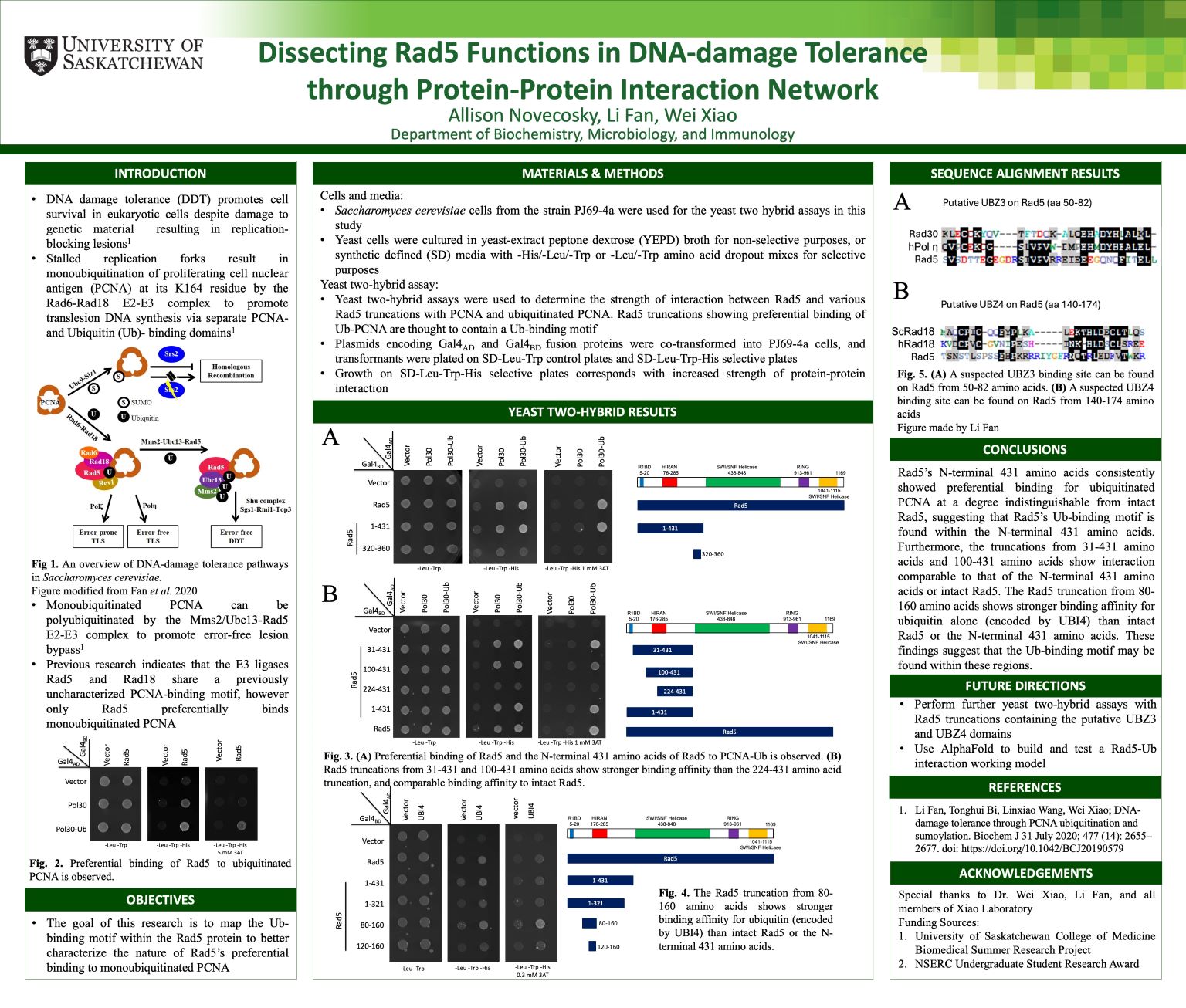
Dissecting Rad5 Functions in DNA-damage Tolerance through protein-protein interaction network
Allison Novecosky
DNA damage tolerance (DDT) promotes survival in eukaryotic cells despite damage to their genetic material. Within the DDT pathway, stalled replication forks result in monoubiquitination of proliferating cell nuclear antigen (PCNA) by the Rad6-Rad18 complex, and monoubiquitinated PCNA can be further polyubiquitinated by the Mms2/Ubc13-Rad5 complex to promote error-free lesion bypass. Recent research in our laboratory indicates that both E3 ligases Rad5 and Rad18 share a novel PCNA-binding motif; however, only Rad5 preferentially binds monoubiquitinated PCNA. The goal of this research is to map the Ub-binding motif within Rad5 to better characterize Rad5’s preferential binding to monoubiquitinated PCNA. Yeast two-hybrid assays were used to determine the strength of interaction between Rad5 and various Rad5 truncations with PCNA and ubiquitinated PCNA. Rad5 truncations showing preferential binding of Ub-PCNA are thought to contain a Ub-binding motif. Rad5-N431 consistently showed preferential binding for ubiquitinated PCNA at a degree indistinguishable from intact Rad5, suggesting that Rad5’s Ub-binding motif is located within the N-terminal 431 amino acids. Furthermore, Rad5 truncations containing aa31-431 and aa100-431 show interactions comparable to that of intact Rad5 or Rad5-N431. Further assays showed that the Rad5 truncation containing aa80-160 binds ubiquitin alone, indicating that this region contains Rad5’s Ub-binding motif.
